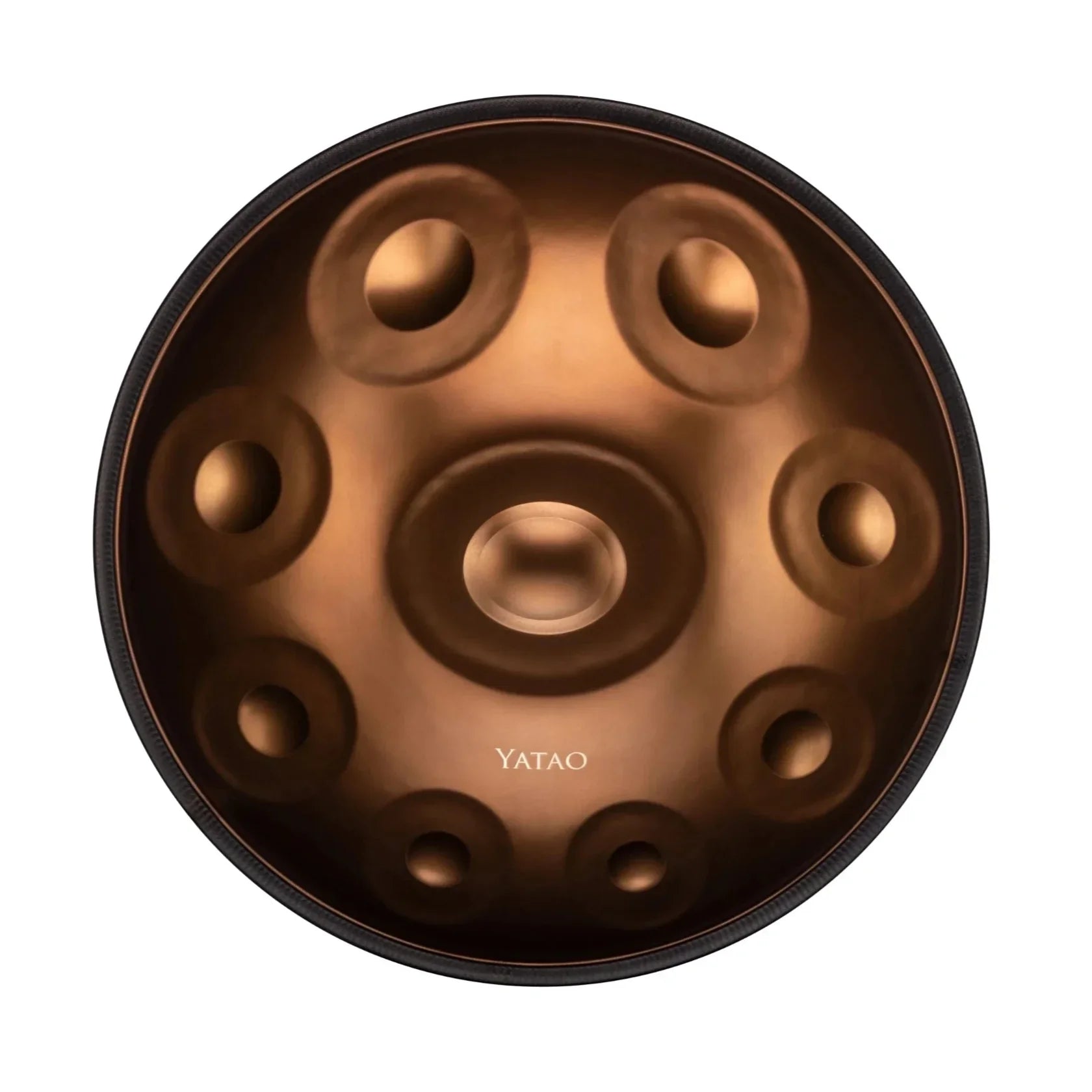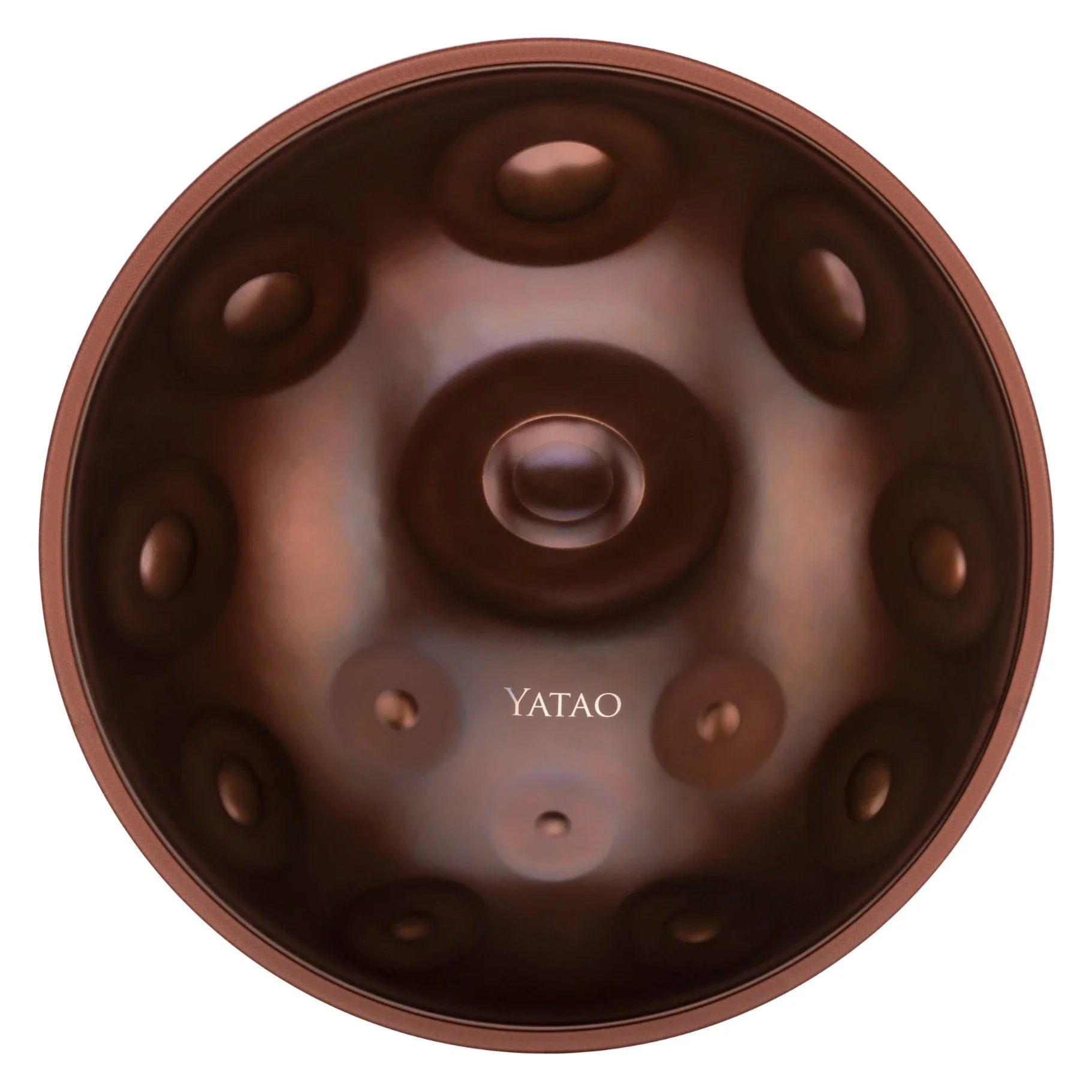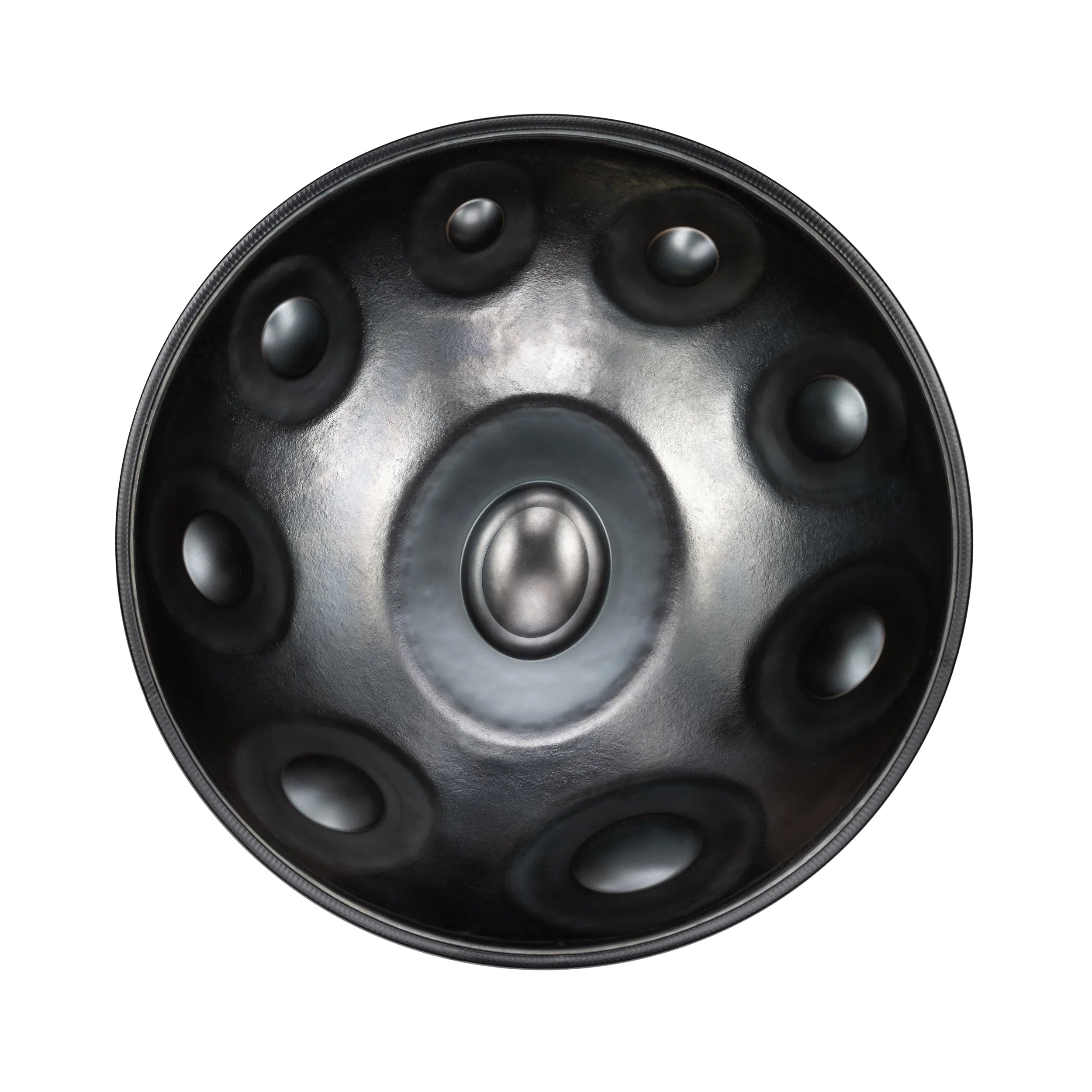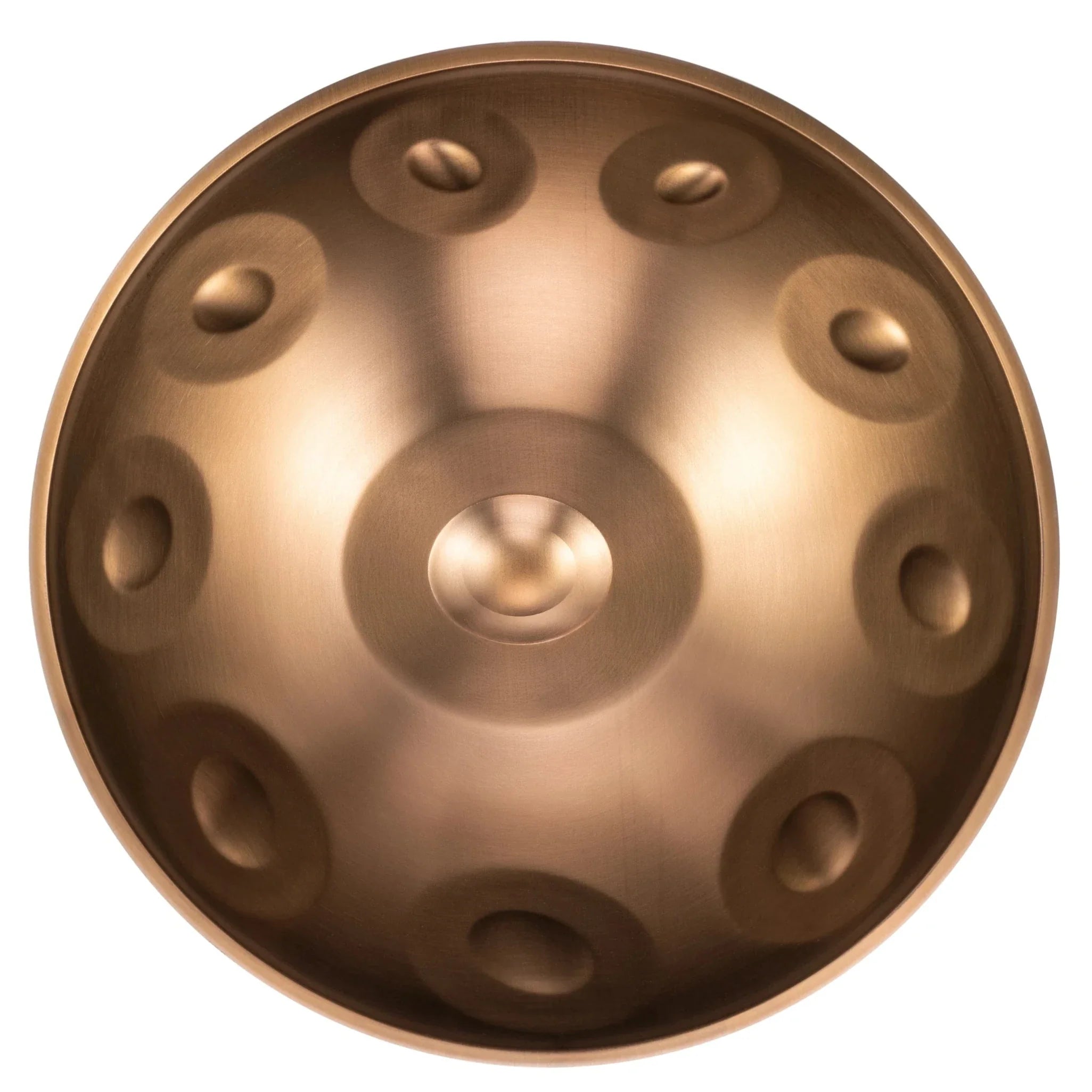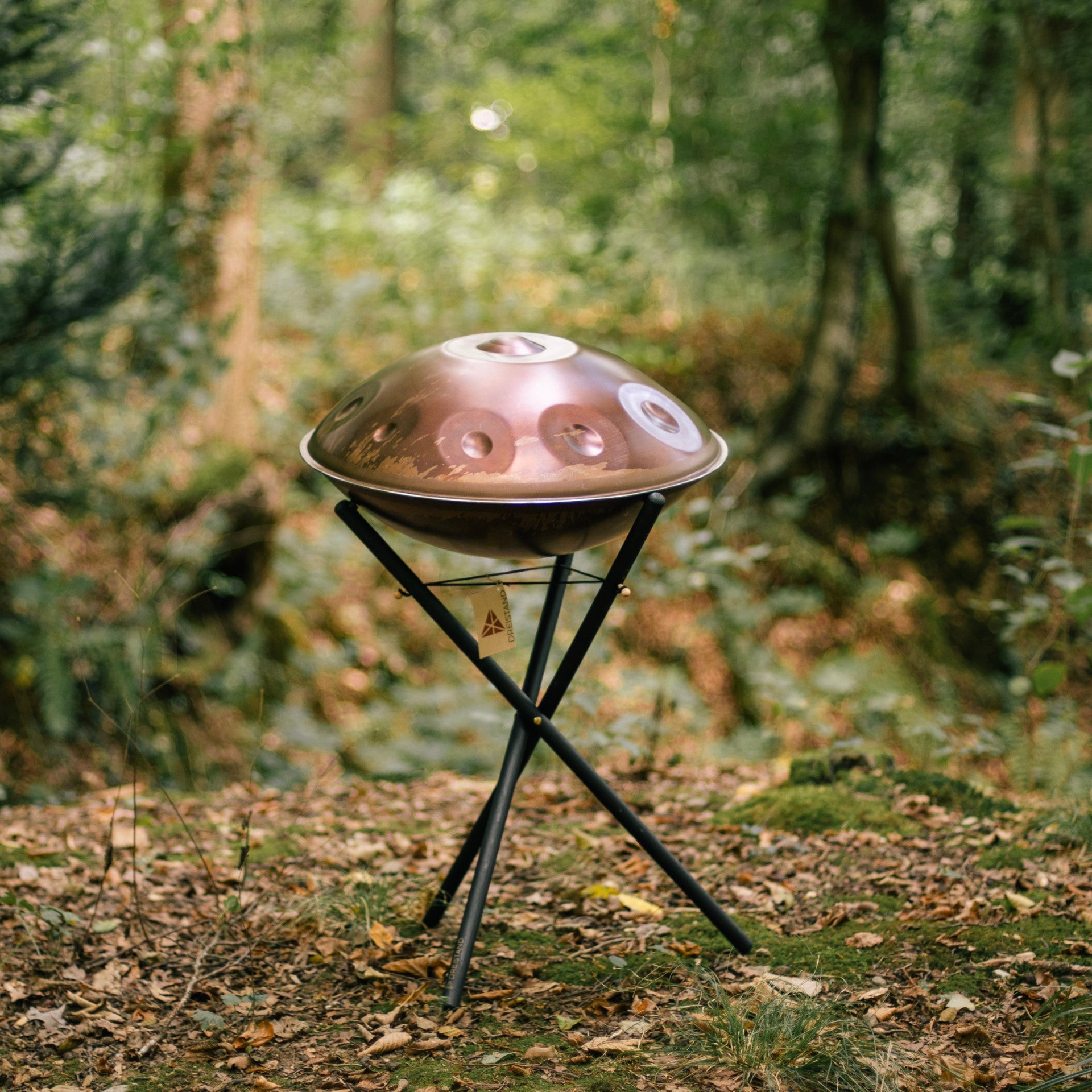Handpan scales and theory
How is the Handpan really called?
Handpan, Hangdrum, Handtrommel, Pantam, Steeldrum, Spacedrum or just UFO? There are too many names for this instrument in circulation to be able to name them all. First of all „Hang ®“ (pl. Hanghang) is a patented description which can only be used by and for the first version manufactured by PANart. It is derived from the Swiss-German word for "hand", because unlike the steel drum played with mallets, the "Hang" is played with the hand. Steel drums were invented in Trinidad in the 1930s and are traditionally made from oil drums. Unlike the convex shaped "Hanghang", they are concave. Names like Spacedrum, Bells, Halo, etc. are the names that other manufacturers gave to their instruments. Due to its fast-paced popularity spread over the internet and the high diversity of names for the instrument, the term "hangdrum" has become established over the years. In the global scene of players and manufacturers, however, "Handpan" and "Pantam" are the two most commonly used terms.
What are the elements of a Handpan?

A handpan has:
- a Ding: basic and bass tone
- the Notes: arranged in a ring form around the central Ding
- the Shoulder: connects the notes with the Ding
- the Rim: outer edge of the handpan
- the Gu: the resonance hole on the backside of the handpan
- the Bottom Notes (optional): additional notes on the back side of the handpan
The scale of each instrument is always set up in the following way (ascending from 1-9):

What is a key?
Major and minor keys are defined by their tonic note (their starting or base note) and their scale being major or minor. A major key uses a major scale, and a minor key uses a minor scale. For example a base note D and a minor scale result in an instrument tuned in D minor. For more detailed information we refer to wikipedia.
For "D Kurd" handpan the "D" refers to the key and "Kurd" to the scale. We will take a closer look at that next.
What is a „scale"?
Each scale has its own specific effect. Even two scales in the same key can create a completely different feeling when playing and offer different possibilities. This is because every note has its own effect. As you can see on the graphics, in contrast to the "Kurd" tuning, the "Celtic" leaves out the Bb on the second tone field, so all tones slide down one level. The result: two hand pans that are mirrored starting from the lower C.


Many handpan makers invent their own names for already named scales, thus a jungle of terms has been created, which makes it difficult to understand. Read here all about the most common scales and find the one that suits you!
Out of which materials are handpans made of?
There are many different materials that can be used to make a handpan. The most common steel is a special iron alloy called DC04, and PANArt used their own material called "Pang". A steel that is completely nitrided and has gone through many phases of heating and cooling. Nitrided steel is the most commonly used steel on the global manufacturing scene because it is easier to work with and is more stable and rust resistant in the end result. Some manufacturers also work with stainless steel. Some makers, like Ayasa, are inventing and developing more material compositions and manufacturing processes. We will keep you updated about the latest developments in handpan engineering!
How do Handpan instruments create their special sound?
The sound of the handpan is generated by the vibration of the different membranes/sound fields that are incorporated on the surface of the tone. The larger the tone field, the deeper the sound, the smaller the tone field, the higher the sound.
The two steel shells glued to each other form a Helmholtz resonance body through the hole in the lower shell ("Gu"), which amplifies the sound of the entire instrument and is largely responsible for the far-reaching and full sound. Usually Handpans are tuned to 440Hz, which is the contemporary concert pitch. Some instruments are tuned to 432Hz, while others are tuned freely and without tuners (e.g. the Free Integral Hang). Unlike the chromatic steelpan, handpans are tuned in a specific key. The fundamental octave and fifth of the fundamental are tuned to each membrane. This peculiarity gives the handpan its deep and rich sound characteristics.
Is a handpan chromatic?
No. Most hand pans are diatonically tuned. Diatonic means that in contrast to chromaticism (on the piano all white and black keys) there is only one specific tone spectrum. This means that with a handpan in D minor, you can really play only D minor and is limited to those at least 8 tonal areas that adorn the instrument.
The complicated part starts with the different scales. For example, there is not only a D minor scale, but also various versions of the key. The intervals existing on the handpan are changed. As we can see in the following example, both of the scales presented begin on the fourth (A) in the ring (letters after the hyphen; letter before the hyphen denotes the Ding). The scale "Kurd" goes well-behaved up all the natural note jumps of the D minor scale, whereas the scale "Celtic" omits the sixth, the "Bb".
Complete d-minor scale:
D, E, F, G, A, Bb, C
"D Kurd 8” scale:
D - A, Bb, C, D, E, F, G, A
“D Celtic 8” scale:
D - A, C, D, E, F, G, A, C
Skala “Mystic 8”
D - A, Bb, D, E, F, G, A, C

